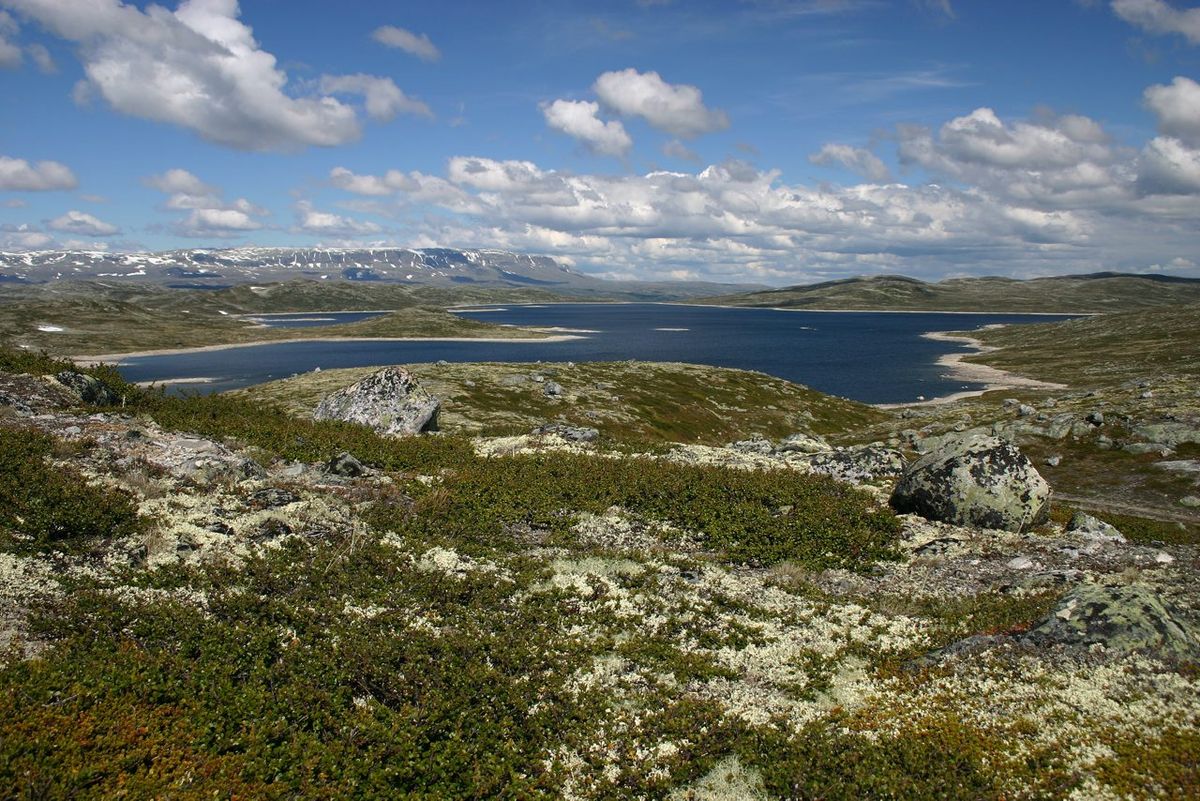The idea that the Scandinavian Ice Sheet somehow crept out of the Jostedal Valley like a slow moving goo, at the onset of the last glaciation period is wrong. We know that the glaciation happened much too rapidly for this to have been the case.
The Scandinavian Ice Sheet was many thousand times larger than the Jostedal Glacier. For the Jostedal Glacier to have grown to the size of the Scandinavian Ice Sheet in the space of a few thousand years or less, it would have had to double in size every century. That's not how massive glaciation comes about.
Glaciation happens as a consequence of snow accumulation across large areas. The Scandinavian Ice Sheet came about as a consequence of a relatively small drop in temperature, or a modest uptick in winter precipitation.
Should temperatures drop by one or two degrees, the entire Hardangervidda mountain plateau would soon be covered in ice. The same would be true of the Scotish Highlands and all other high laying regions of northern Europe.
With summers currently barely warm enough to melt all the snow in these regions before the onset of a new winter, a tiny change in average temperature, or modest increase in snowfall during winter, would be enough to upset the balance. Once snow no longer melts off completely through the summer, glaciation happens, and can happen very quickly.
The return of the Scandinavian Ice Sheet is unlikely to take more than a few decades if temperatures were to drop by a degree or two.
Conversely, the end of a glaciation period are also quick.
When temperatures are consistently high, the entire ice sheet melts. It will not be just the edges that retreat. The whole thing shrinks.
This is what happened at the end of the last glaciation period, which was so warm that the Scandinavian Ice Sheet, including the ice the Jostedal glacier, disappeared completely.
The Scandinavian Ice Sheet didn't creep out of the Justedal region, nor did it slither back to it like some snake. The Jostedal Glacier and the Scandinavian Ice Sheet are only related in the way they come about and the way they disappear.
They come about through precipitation, and they disappear through melting. Large ice sheets appear and disappear in a matter of decades, not over thousands of years.
 |
| Hardangervidda: Barely ice free in the middle of summer |
By Smtunli, Svein-Magne Tunli - http://www.tunliweb.no/SM/English/sm_eng.htm - Own work, CC BY-SA 3.0, Link
No comments:
Post a Comment